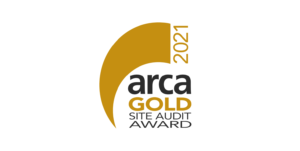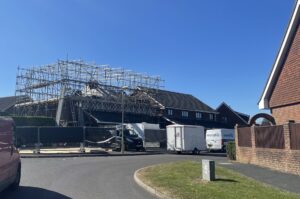What is asbestos? Asbestos is a naturally occurring mineral from the silicate family. Although there are many different types of asbestos fibres, the three most commonly used in the UK were Crocidolite, Amosite and Chrysotile (blue, brown and white respectively).
Each with their own individual characteristics, the widespread use of asbestos became popular, predominately for its insulating properties in addition to providing additional strength to several common building materials.

Crocidolite
Known widely as ‘blue asbestos’ this fibre was voluntarily banned in the UK in 1970. Considered the most dangerous form of commercially used asbestos, Crocidolite fibres are shorty and spikey, meaning then tend to puncture the lining of the lungs causing long-lasting damage. Their spikey shape also mean they are more difficult to breathe out if inhaled.
Crocidolite is part of a family of minerals known as Amphiboles, of which Amosite is also a member. The Amphibole family also include Tremolite, Anthophyllite and Actinolite. These additional 3 minerals are also considered dangerous to humans, although they were used far less frequently due to them being much rarer.
Crocidolite was mainly used in the UK as a sprayed-on insulation, thermal insulation (pipe lagging), loose-fill insulation, asbestos-woven textiles (such as gaskets) and in cement sheeting. Due to its uses for spray / lagging applications and gaskets, Crocidolite was very common in the marine industry for use on ships.
Amosite
Amosite asbestos is more commonly referred to as ‘brown asbestos’. Voluntarily banned from import into the UK in 1980, Amosite is considered another very dangerous form of asbestos.
Almost exclusively mined in South Africa, Amosite was given its name based on the acronym of the producer Asbestos Mines of South Africa. The technical name for Amosite is in fact Grunerite, however it is rarely referred to under this name.
Amosite is the most commonly found Amphibole type of asbestos. More course and stronger than Chrysotile fibres, Amosite was widely used in rigid boards such as asbestos insulation boards (AIB). Amosite can be found as the only asbestos ingredient in AIB, but is often used as part of mixture with Chrysotile.
Chrysotile
Chrysotile is by far the most commonly found asbestos type, not just in the UK, but worldwide. Unlike Amosite and Crocidolite, Chrysotile is part of the Serpentine family of minerals and as such has different characteristics in terms of fibre shape. Chrysotile is made up from small curly fibres. This enables fibres to be breathed out more easily as they are less likely to become lodged in the lungs or other parts of the respiratory system.
Chrysotile is by far the most common of all types of asbestos, accounting for over 90% of all that used in building materials
Often referred to as ‘white asbestos’, over 90% of all commercially used asbestos was Chrysotile. Chrysotile was the last type of asbestos to be banned in the UK. Amosite and Crocidolite were officially banned in 1985 as part of the Asbestos (Prohibitions) Regulations. These regulations were updated in 1992 to include Chrysotile. Chrysotile was banned completely in the UK from 1999.
Although proven to be a cause of respiratory disease, Chrysotile does pose a smaller risk than other types of asbestos from the Amphibole family. Still mined today in several countries across the globe including India, Brazil, Russia and China, Chrysotile continues to be used in developing countries despite the now-known health risks.
Common Types of Asbestos Materials
- Loose fill asbestos insulation (used in lofts, floor voids and within partition walls)
- Sprayed coatings (known as limpet)
- Pipe lagging
- Insulating board (AIB)
- Ropes, yarns and cloths (primarily used in older fuse boxes and pipe gaskets, but also gloves and fire blankets)
- Paper (backing used for flooring applications)
- Bitumen felts and associated products
- Flooring materials (both sheet vinyl and thermoplastic tiles)
- Textured coatings and paints (often referred to as Artex)
- Mastic, sealants and putties (often used as a glazing bead and in very old wall plugs)
- Reinforced plastics (toilet seats and cisterns)
The above list is ordered from most to least dangerous. It should be noted that all types of asbestos have the potential to pose a risk if not handled or removed appropriately. The top 6 should only be removed or treated by a licensed asbestos removal contractor. Items 7-11 do not require a licensed contractor, however those looking at having such products removed should be competent and have sufficient training as highlighted by the HSE. If you are in any doubt about a material that is suspected or known to contain asbestos, get in contact and a member of our team will be more than happy to help.





